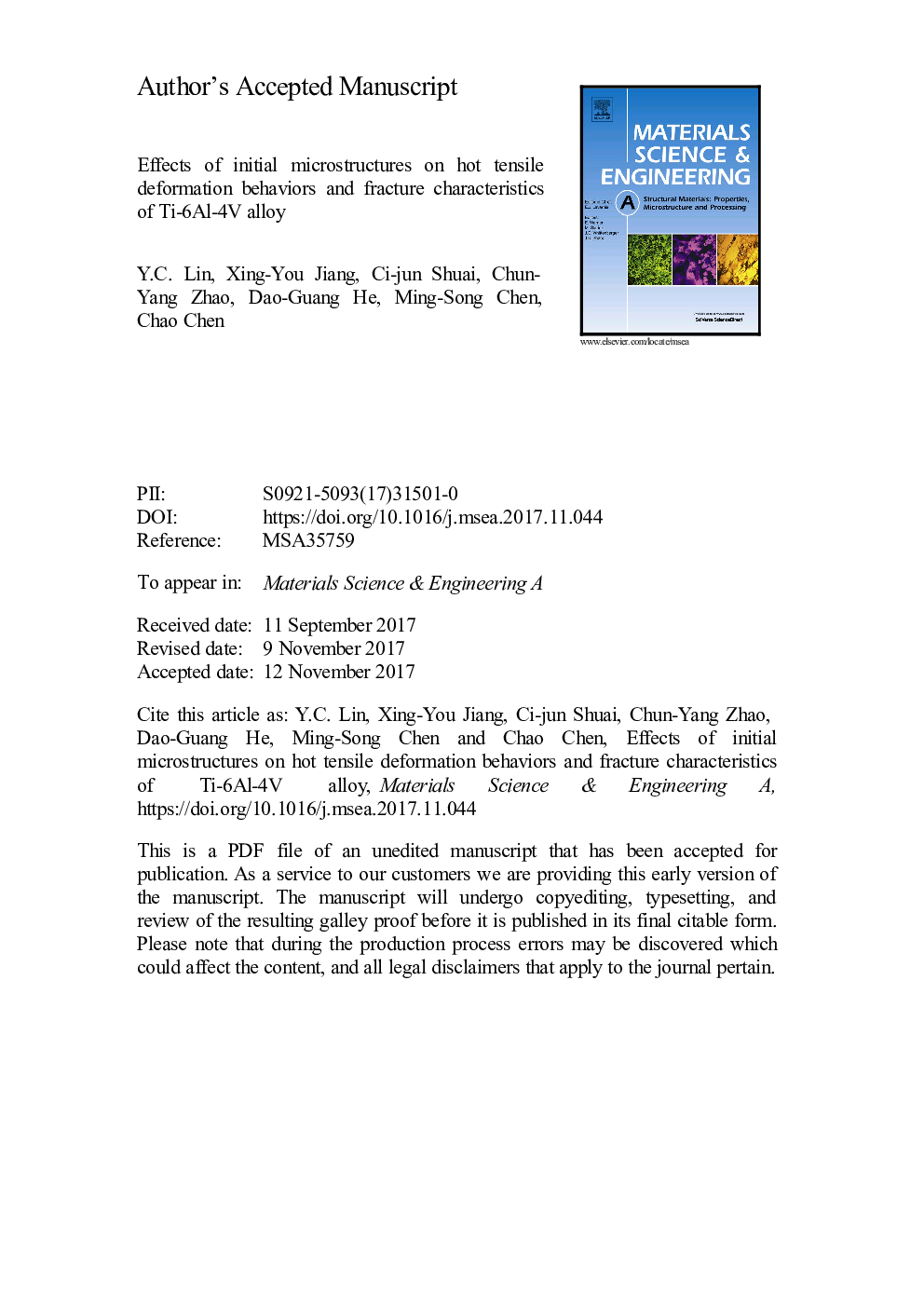| Article ID | Journal | Published Year | Pages | File Type |
|---|---|---|---|---|
| 7974246 | Materials Science and Engineering: A | 2018 | 19 Pages |
Abstract
The effects of heat treatment processing on the microstructures of Ti-6Al-4V alloy are systematically studied. Static globularization behavior of lamellar α phase is found when the alloy is cooled in air or furnace from 950-960 °C (below the β-transus temperature, about 975 °C). Three kinds of microstructures (basket-weave, globular-lamellar, and equiaxed microstructures) are obtained by different heat treatments. The uniaxial tensile tests of the studied alloy with different initial microstructures are conducted at the elevated temperature and different strain rates. It is found that the initial microstructures have obvious effects on the tensile properties and fracture mechanisms. The alloy with basket-weave microstructures exhibits the most obvious work hardening behavior and the highest strength. The alloy with globular-lamellar microstructures has the better ductility than that with basket-weave microstructures. Furthermore, the alloy with equiaxed microstructures has the best ductility, because the equiaxed α phases can delay the formation and coalescence of microvoids. Meanwhile, α phases are elongated, bent and spherized, which contributes to the flow softening during tensile deformation. Especially, the alloy with initial equiaxed microstructures finally transforms to bimodal microstructures after tensile fracture. Additionally, the alloys with three different initial microstructures all show a primary ductile fracture.
Related Topics
Physical Sciences and Engineering
Materials Science
Materials Science (General)
Authors
Y.C. Lin, Xing-You Jiang, Ci-jun Shuai, Chun-Yang Zhao, Dao-Guang He, Ming-Song Chen, Chao Chen,
